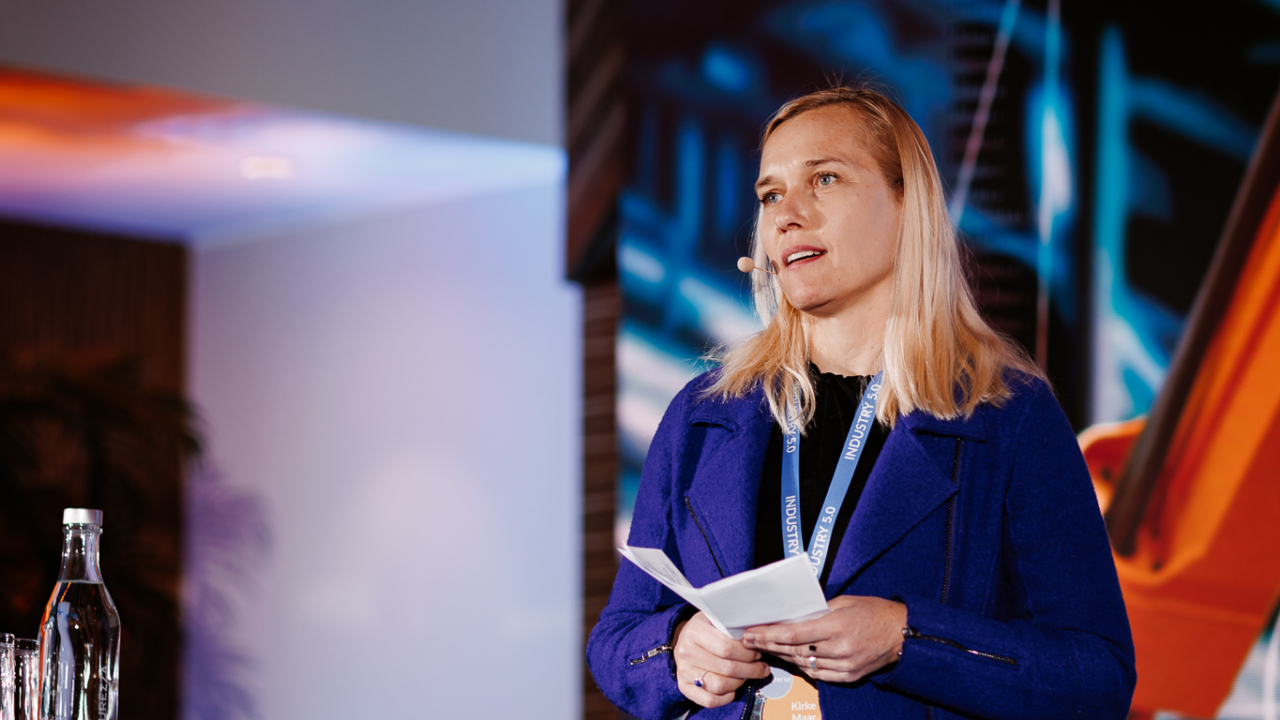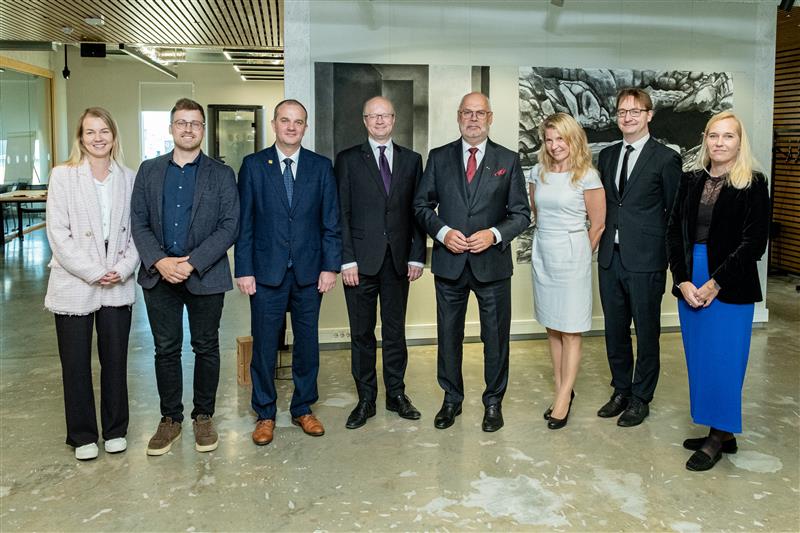AIRE Head: Mindset Change Needed for Industrial Sector Survival
The role of the state can be much more effective in ensuring that the industrial sector adopts robotics and artificial intelligence more extensively, stated Kirke Maar, head of the AIRE Center. “The rest of the world is moving ahead at great speed, and unfortunately, our innovation capability is largely hindered by current financing and cooperation models. A clearly demand-driven triple helix funding policy has proven successful in other countries,” Maar pointed out.
AI and Robotics Center
Kirke Maar, the head of the AI and Robotics Center at AIRE, said that the center’s goal is to foster a mindset where the private sector, public sector, and universities collaborate even more closely. “Innovation project ideas arise from the needs of the private sector, and the implementers can be universities, science parks, etc., but on the principle that for every euro from the private sector, two euros are added from the public sector. This practice is common in many European countries,” Maar explained. She added that while this system is not yet in place for universities here, there is a great need for it in society. Similar triple helix systems have been implemented in Finland, Sweden, Germany, Ireland, and elsewhere.
Favorable Environment
“Our partners in the EDIH (European Digital Innovation Hubs) from other countries also use these opportunities. While the EDIH program supports us with two million euros annually, the example of Ireland is very impressive – they are currently planning a seven-year program for 2025+, where private companies contribute 30% and the state adds 2/3. In total, they are seeking about 100 million euros in innovation funding to support the local industry,” Maar cited as an example. “My concern as the head of the AIRE center is that the industrial sectors of other countries are moving far ahead of us, offering complex support schemes for establishing factories. A good example is our own Skeleton Technologies OÜ, which has set up a factory in Germany and is establishing a new one in France, negotiating incentive packages with state leaders.”
Maar emphasized that establishing a triple helix system with universities and science parks in Estonia, as well as conceptualizing motivation packages for the industry, requires a change in mindset. She noted that AIRE currently has basic funding and they do not seek to collect more money, but rather to change the mindset in the long term. What is needed now is demand-driven tripartite cooperation. The most popular AIRE service has become demo projects, which test new technologies and algorithms before making larger investments. “We do not do research and development work, but we test and experiment for validation, although this needs to be done on a much larger scale,” Maar said. “From AIRE’s services, our clients (190 clients) have developed a need to systematically conduct project-based learning alongside involving researchers and PhD students. Already, the most talented master’s students are in the teams,” she added.
Maar mentioned that AIRE Club supporters can contribute to AIRE’s activities in at least three ways: the first way is to contribute their time to collaboration. “Our advisory board members have been doing this for two years. The second way is to engage in technological collaboration, and the third way is to support us financially – this is also very necessary, as we are a sustainable center, not just a European Union project,” said Maar.
Pressure for Change
Companies wishing to take advantage of the AIRE demo project opportunity must first undergo a digital maturity assessment. According to Maar, more and more companies are realizing the added value this provides. “Estonian industry is changing, we are no longer a low-cost procurement country. Currently, it is even more expensive to produce in Estonia than in Finland – depending on the segments. We urgently need to adapt business processes and models. We also need to find new ways to collaborate with major European companies to execute larger orders. Estonia has a significant number of industrial companies that need to find a new business model to compete in Europe. This is sad on one hand, but it allows us to focus on opportunities,” Maar said.
She noted that the global economy is becoming more protective of its markets, led by the United States, and not just during Donald Trump’s time, but also now under the Democrats. More and more, the market for Estonian industrialists is the European Union, whose countries are bringing back their factories and also supporting the establishment of new ones. The decisive factor is international cooperation in Europe and more efficient cooperation among Estonian companies to secure larger contracts. “Industrialists who survive the easiest are those who produce more intelligently, whose products are smarter, and who can collaborate wisely both in Estonia and Europe,” she affirmed.
The AIRE director pointed out the bottlenecks that keep the productivity of industrial companies in Estonia low. “I don’t want to be harsh, but labor costs as input costs reduce our competitiveness. Similarly, high energy costs are a major obstacle – for example, we are three, five, even ten times more expensive than Finland on some weeks. We don’t have enough wind farms to support us with renewable energy, nor do we have nuclear power plants to produce energy. We are looking for ways to produce energy from hydrogen, but this makes production costs very high. Unfortunately, there are cases where large industries have shut down production for some weeks due to high input costs. The state deals with energy policy, but it is increasingly necessary to think about smarter production in cooperation with universities,” concluded the AIRE center director.
Photo: Rene Lutterus





